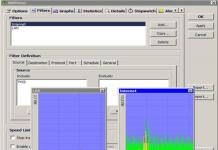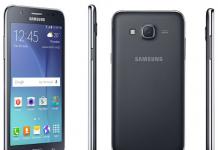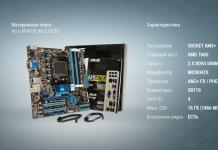The recently announced Galaxy S8 and Galaxy S8+ smartphones show good results in tests for battery life and full battery charge.
The Samsung Galaxy S8 and Galaxy S8+ flagships are two amazing smartphones with great designs, great cameras and... But how are they doing with battery life? In theory, a powerful processor and high-resolution display should consume a lot of energy.
The PhoneArena team tested the Exynos 8895-powered Galaxy S8 and Galaxy S8+ under standard conditions with a brightness of 200 nits (which should be enough for comfortable indoor use). It is worth noting that the default screen resolution is set to 2220x1080 pixels. We remind you that the Galaxy S8 is equipped with a 3000 mAh battery, and the Galaxy S8+ is equipped with a 3300 mAh battery.

The Galaxy S8 smartphone can work exactly 8 hours without recharging, while the widescreen model has a slightly higher result - 8 hours 23 minutes. It is noteworthy that the Galaxy S8 based on Snapdragon 835 holds a charge slightly less - 7 hours 50 minutes.
The device showed a decent increase in battery life compared to its predecessors, and also outperformed the Google Pixel XL, LG G6, Huawei P10 and OnePlus 3T. Nevertheless, the leader is still the Apple iPhone 7 Plus with a result of 9 hours 5 minutes.

Another important aspect of battery use is charging time. Both devices support proprietary Fast Adaptive Charging technology. It takes 1 hour 39 minutes to fully charge the Galaxy S8, and 1 hour 40 minutes for the Galaxy S8+. In addition, support for wireless charging is provided.
A new era has begun for Samsung. And it's not just that the Galaxy S8 became the first top model after the problems with the Galaxy Note 7. The smartphone marks a design change and the first appearance of Infinity Display. However, in practice, everything turns out to be somewhat different than what marketers promise.
It is impossible to say for sure whether problems with the Galaxy Note 7 battery caused the delay in the release of the Galaxy S8 to the market. But at its presentation, Samsung specifically indicated that the company had taken a set of measures designed to improve the quality of batteries. Even at the production stage of a smartphone, various tests are performed to prevent potential problems from occurring. So Samsung is unlikely to make a similar mistake a second time.
It is still difficult to say whether the South Korean company will be able to regain the trust of users. The company's reputation has suffered, but it's worth waiting for the sales results of the Galaxy S8 and Galaxy S8+.
Galaxy S8 is significantly different from previous models
It would seem that Samsung should have offered attractive prices for new models. But it turned out exactly the opposite. For the Galaxy S8, the Korean company asks 799 euros; in Russia, smartphones are available from 54,990 rubles. For Galaxy S8+ - 899 euros or 59,990 rubles. Compared to its predecessors, the price has increased by 100 euros, although the Galaxy S8/Galaxy S8+ cannot be directly compared with each other. By the way, stores are not discounting prices yet.
Larger or smaller?
What to do if the user simply does not notice a further increase in performance, but the quality of the cameras is already quite high? You can, like HTC, go into design, but you can also find a new component that will be interesting not only technically, but also externally. And Samsung found such a component - a display.
The South Korean company has extensive experience in designing and manufacturing panels, having proven in 2014 with the Galaxy Note Edge that the display doesn't always have to be flat. A few months later came the Galaxy S6 edge and Galaxy S6 edge+, then the Galaxy S7 edge and the ill-fated Galaxy Note 7. Finally, with the Galaxy S8 and Galaxy S8+ smartphones, we get the next evolutionary step, although Samsung itself is talking about a revolution.
The Infinity Display has had a major impact on the design of the smartphone. If you have to allocate maximum space for the display, then you need to get rid of everything else. In the case of a smartphone, you will have to change the position of the sensors, speaker, front camera and other components. All this leads to its consequences, which we will repeatedly mention in our test.
Infinity Display is a key feature of the Samsung Galaxy S8
Samsung engineers thought for a long time about how to install the largest possible panel in the most compact case. Removing the display frames was not enough; the format was changed. Until recently, 16:9 was the universally accepted format, but then LG introduced the G6 smartphone with an 18:9 aspect ratio. Samsung did not stand aside and has now released 18.5:9.
The reason for this decision is obvious: the further the manufacturer moves away from the 1:1 format, the less area the display occupies while maintaining the same diagonal. And the smartphone body can be made longer and narrower than before. In general, the format is smaller. This way, you can fit a larger display in the same body. But, of course, here marketing has little to do with reality.
For the Galaxy S8 smartphone, Samsung chose a 5.8" display with the aforementioned 18.5:9 format and a resolution of 2,960 x 1,440 pixels. It is based on a Super AMOLED panel. The display area is 85.38 cm². It seems like a lot, but the Galaxy S7 edge with a 0.3" smaller diagonal we get 83.39 cm². And the Galaxy Note 7 with a 5.7" diagonal has a large area of 89.57 cm². As a result, the diagonal alone without additional information does not allow us to come to any conclusions on the actual size of the display, which complicates the situation for consumers. However, Galaxy S8 has another "pitfall". In reality, we were never able to measure the 5.8" diagonal.
The frame of the Samsung Galaxy S8 display is very thin on all four sides
Diagonal is the value we get when measuring the distance from one corner of the display to the opposite. But Samsung did not use standard right corners, but rounded ones - like the LG G6. The same goes for the right and left curves of the display. However, the curves are well known from the two previous generations of Galaxy S. If we measure the diagonal using the real pixels of the “round” corners, we get a diagonal of only 5.6" and an area of 79.59 cm². If we convert the display to the classic 16:9 format, then we get a 5.4" diagonal, which is even smaller than the Galaxy S7 edge.
So most of Samsung's efforts were wasted and don't matter in practice.
As with its predecessors, display curvature on the right and left is rarely used in everyday use. Various widgets and tools can be placed on the sidewalls, but only one of the two sidewalls is available, and other manufacturers offer comparable functions to standard displays. But, as in the case of the Galaxy S7 edge, the external keys of the on-screen keyboard are distorted, making typing no longer so convenient. In landscape mode, content such as photos or videos extends off the flat portion of the display. All this leads to distortion and glare, and sometimes to disruption of color rendition.
As for video, you will have to face another limitation. Most movies and TV shows today are shot in 16:9, which results in black bars on the right and left sides of an 18.5:9 panel. And although Samsung promises that the relatively long display allows you to scroll less frequently in the browser, the company is being cunning here too. The Galaxy S8's display is narrower than its competitors' 16:9 format with the same diagonal, so content on web pages appears smaller without scaling. This problem is not observed on sites with adaptive design.
So decide for yourself how important the mentioned restrictions are for you. But apart from them, the question of display characteristics remains. With a pixel density of 570 ppi, the Galaxy S8's display provides plenty of detail, with Pentile Matrix features barely noticeable. Although you can’t hide the cold color temperature: the standard temperature is 7,800 K, which is clearly visible even without direct comparison. We tried to adjust the temperature manually, but we could not achieve a result better than 6,900 K. And compared to a white sheet, for example, the cold temperature of the Galaxy S8 is still noticeable. The color gamut of the display corresponds to DCI-P3, as for the sRGB standard, more than 120% is already stated here. As is usually the case with Super AMOLED panels, colors look vibrant and rich, but still retain a natural look. Of course, the black color here is real - another advantage of the technology.
The display of the Samsung Galaxy S8 provides sufficient brightness and good color reproduction, it is HDR certified
Samsung not only introduced a high-contrast display with excellent color reproduction, but also added high dynamic range. The smartphone has received Mobile HDR Premium certification, which indicates the ability to play relevant content. But herein lies the problem: neither Netflix nor Amazon currently have compatible content, although both streaming services have long listed HDR support. Also, corresponding YouTube videos are not supported on the Galaxy S8. It is unknown when the situation will change on the part of the largest streaming services.
We took measurements of the display brightness. In manual mode, we got a maximum brightness of 358 cd/m² - but only when the slider was moved to the red zone and the smartphone issued a corresponding warning. In the case of automatic brightness control, we got 538 cd/m² on an all-white display for a short time. The value may be even greater if the white areas do not occupy the entire display area. According to DisplayMate, brightness levels above 1,000 cd/m² are possible. However, Mobile HDR Premium does not require such brightness. To be certified, the display must show a brightness of 550 cd/m² and 90% of the DCI-P3 color gamut.
Left: The curvature of the Samsung Galaxy S8 display can accommodate different panels. Right: The bend can display a compass, the most important contacts or, for example, the results of the latest football match.
If you want to use the full resolution of the display, it must be installed separately. By default, the Galaxy S8 only works with FHD+ resolution or 2,220 x 1,080 pixels. You can also specify font scaling. You can also set which applications will run in full screen mode. Only these applications will receive full screen, all others will be displayed in 16:9 format. It’s convenient that optimized programs are marked in the submenu. Samsung warns that other programs may not work correctly in full screen mode.
Samsung has retained the Always-On feature. After activating it, even when the screen is turned off, information about missed calls, received messages and time will be displayed. Several layouts are available, and you can also use the right or left side of the display.
site is a one-stop site where you can compare prices for phones and other devices in various popular Chinese online stores. Our website offers you a convenient algorithm for searching for products with their detailed descriptions and a list of all key characteristics. Thanks to the Sintetiki website, you no longer need to independently search for Chinese stores for smartphones and other electronics to buy the device you need. As a bonus, we have a YouTube channel where you can watch a review of synthetic equipment.
Synthetic Purposes No
The main task of the resource is to provide assistance to customers in finding and purchasing electronics on such popular online platforms as AliExpress, GeekBuying, Gearbest and others.
For the convenience of users, a multi-level mechanism is offered that will help you find useful gadgets. In the catalog of the Synthetics website, you can not only compare Chinese smartphones, but also simply familiarize yourself with the parameters of the devices you are looking for, as well as view the dynamics of changes in their prices since the start of sales.
Price tracking is worth highlighting separately. AliExpress is one of the most popular online platforms in the world. Low prices have made it especially popular in Ukraine, Russia and Belarus, despite the permanent reduction of the duty-free import limit in these countries. By going to the page of the product you are looking for, you will see the dynamics of changes in its value. This information will allow you to assess the market situation and buy a device profitably.
We offer price comparisons for mobile phones, tablets, laptops and other devices. To do this, you need to go to the desired section and click on the corresponding icon located next to the device image. After two or more models have been added to the comparison, a corresponding button will appear in the lower right corner of the screen, clicking on which will take you to a page where the main characteristics of the devices will be displayed.
Our hottest offers are:
Assortment website
· smartphones;
· tablets;
· laptops;
· covers;
· protective glass;
· accessories;
· other.
In the “Other” section you will find a huge assortment of various equipment. In particular, you can find augmented reality glasses, hoverboards, robotics, quadcopters, consoles, and more.
If you are interested in the most popular and new smartphone models, we recommend visiting the appropriate category. Smart phones are the most popular gadgets. AliExpress, Gearbest and other stores often offer discounts on smartphones. And we are always looking for great deals for you. You can quickly find them in the “Coupons/Discounts” section.
By going to the page of a smartphone, laptop or other device, you will see prices for gadgets in Chinese stores. In addition, you can familiarize yourself with the characteristics of the models and leave reviews about the products.
Strengths of Synthetics No
So, the main advantages of the site are:
· the ability to compare prices for tablets, smartphones and other equipment;
· comfortable selection of goods;
· reliable sellers;
· low prices;
· bargain purchase;
· microloan service;
· a wide range of;
· price tracking service;
· cheap goods from Chinese stores;
· opportunity to get acquainted with the characteristics of devices;
· quick shopping.
Here you can also find reviews from customers who have already acquired one or another device. This will allow you to quickly form your own opinion about the device and decide on the advisability of purchasing it. In addition, on our YouTube channel you will find a review of smartphones and headphones that are the most popular.
Today it is difficult to surprise anyone with the announcement of a new smartphone. Everyone is already accustomed to the fact that a flagship has a top-end processor, 4–8 GB of RAM, a large screen, a metal body, and that it takes better pictures and sounds better than anyone else. If a person follows technology, it is almost impossible to amaze him.
However, as it turned out, in 2017, engineers found a way to take a fresh look at smartphones. From a technological point of view, Sony Mobile was surprised by releasing the Sony Xperia XZs and XZ Premium with a new Motion Eye camera unit, which allows you to record super slow-motion videos at a speed of 960 frames per second. You can already read a review of the Sony Xperia XZ Premium at.

Samsung decided to surprise with its appearance. In recent years, the Korean company has shown and proven that in terms of hardware it is ahead of the rest: chipsets made using advanced technical processes, a large amount of RAM and built-in memory, a high-quality AMOLED display and one of the best cameras on the market. Interestingly, the appearance of the smartphone began to seriously change with the announcement of Note edge, and subsequently - with the release of the S6 edge smartphone. The screen, curved on the sides, can hardly be called a functional feature of the smartphone: all the features, such as the side screen, turned out to be secondary and, it’s nice to note, can be turned off. But the picture on this screen differed favorably from that on a flat display: it became a little more interesting, acquiring a kind of volume. Over the course of a couple of years, Samsung continued to incorporate 3D thermoformed screens and glass into its flagship smartphones, achieving smooth lines on both sides and brilliant ergonomics.

Samsung Galaxy S8 and S8+ can be called the pinnacle of creativity of Korean smartphone manufacturers. Thanks to its design features, it looks like a hello from the future: next to it, other 2017 smartphones look hopelessly outdated. However, it is possible that in 2018 or even earlier (in September) we will see another revelation.
Interestingly, the camera unit in the Samsung Galaxy S8 and S8+ has hardly changed compared to the seventh generation. Moreover, Samsung and the aforementioned Sony have not yet released a smartphone with a dual camera. What adds intrigue is that, in fact, only these companies are manufacturers of photo sensors for mobile phones, while ignoring this trend of the last couple of years in their products.

It is worth saying that our test is relevant for both the Samsung Galaxy S8 and S8+, since the differences between the two smartphones are only in size, display diagonal and battery capacity. Otherwise, these are two identical devices. In the camera unit of the new Samsung you can find two sensors: Sony IMX333 or ISOCELL S5K2L2. The latter matrix is a product of Samsung Semiconductors.

 SM-G950F SETTINGS: ISO 40, F1.7, 1/301 sec, 26.0 mm equiv.
SM-G950F SETTINGS: ISO 40, F1.7, 1/301 sec, 26.0 mm equiv.
The rest of the camera characteristics remain the same as in the Samsung Galaxy S7 and S7 edge: the physical size of the matrix is 1/2.5”, resolution is 12 megapixels. The lens also remains the same: the equivalent focal length is 26 mm, and the aperture is f/1.7. All the strengths of the mobile camera have not gone away either: optical image stabilization and fast phase detection autofocus with support for Dual Pixel technology, which makes Samsung cameras similar to Canon cameras.

Perhaps the most noticeable change is the new front camera unit. First of all, the sensor resolution has increased to 8 megapixels, but the aperture ratio remains the same - F1.7.
I decided to become the owner of a smartphone with an EDGE form factor (simply, with a curved screen) last year, after the pioneer of curved screens Samsung released the flagship Galaxy S7 Edge. However, the price of the new product (49,990 and 59,990 rubles for the regular and “plus” models) “bite” - I licked my lips as I walked past the display cases with the treasured phone, but I didn’t dare shell out an amount exceeding the average Moscow salary. Even the interest-free installment plan, with which the company actively stimulated sales, did not help me cross the line between the desire to live within my means and the desire to own a fashionable and beautiful gadget.
I took a step closer to my dream when I was offered to test this year’s new product: Samsung released another flagship in the Galaxy S line, this time with no alternative to an EDGE screen - externally, the S8 and S8+ differ only in size. I got a regular G8 with a 5.8-inch display. The plus model will be all 6.2.
Samsung Galaxy S8
Design and first impressions
The streamlined shape of the device fits comfortably in the hand, the width of the device is just enough so that you can reach the icon on the opposite edge of the screen with your thumb. The elongated body of the gadget compared to most of its “classmates” is perceived without objection: the fact that holding the device in the palm of my hand, I cannot reach the upper corner of the display does not bother me at all - we have long been unaccustomed to working with modern “shovels” with one hand. Plus, the curved screen comes to the rescue: if you want, you can enable the Edge side screen panel to be called up, setting a personal list of functions and applications that can be called up with a light touch of your finger.
But on the large “limitless” screen you can comfortably watch a wide-screen movie, see more details in a photo, or read long text with less scrolling. And in general, the design of a “smartphone without borders” (the slogan of this model) captivates at first glance with a kind of weightlessness, airiness, evoking associations with an infinity pool, where the surface of the water goes beyond the horizon, into infinity.

iPhone 6S Plus (5.5" screen) and Samsung Galaxy S8 (5.8" screen)
However, as is well known, any advantages are always the other side of disadvantages. This turned out to be true for the Samsung G8. The sleek, streamlined shape is beautiful, but there is nothing to grab onto (literally!), and the glossy surface of the back panel is slippery, so there is a danger of dropping the device, which is exactly what happened.
I tried to hold my car keys, thin clutch and smartphone in one hand. And my Samsung, unpacked three days ago, slipped out of my hand
At first glance, the fall was not that dramatic - vertically downward. For a device with a regular “frame” display, this would be quite tolerable - at most a scratch or a small dent on the body (I can judge by Honor’s own). But the “limitless” screen is not like that: a chip and three small cracks immediately appeared on the glass, one of which after a couple of days “grew” to almost a third of the screen. Hence the practical advice to fans of infinity screens: do not hesitate to pack your gadgets in durable book covers or covers. Now I understand that the seller’s offer at the showroom, when I was looking at the “Seven,” to immediately buy an additional warranty for the screen and get a case and protective glass was not just a promotion for additional options, but a completely prudent recommendation. Another “but” regarding the screen without side frames is that sometimes the sensitive touchscreen erroneously reacts to the touch of fingers simply holding the smartphone, and launches unnecessary applications or unnecessarily changes the viewing zoom. However, over time you can get used to this feature, and a cover placed on the device should completely reduce the problem to “no”.

Notifications on the Samsung Galaxy S8 lock screen
Camera
Taking photos and videos on a new gadget turns into pure entertainment or a demonstration of the capabilities of the pros - whatever you like. Lens experts will appreciate the built-in technologies for focusing and stabilization - moving objects are clear, even in the dark, for the best composition you can select the focus length, and the most advanced will turn on the “Pro” shooting mode and adjust shutter speed, exposure and other functions incomprehensible to mere mortals.
Laymen like me will not be able to stop taking selfies with funny stickers - they also move! Food bloggers will love the Food mode
Features such as face recognition, shooting mode selection and built-in filters don’t even need to be mentioned: Samsung’s flagship has them by default. I’ll just note that operating the camera is extremely convenient: you can set up functions, switch between the front and rear cameras, change the zoom with one movement of your finger, and if necessary, the camera will take a shot at your command “Voice!”, that is, excuse me, “I’m taking pictures!”

Galaxy S8 camera has a feature to add funny stickers when taking pictures
Sound and virtual assistants
This may seem unimportant to some, but I personally was pleased with the acoustic capabilities of the G8: in the car, wanting to listen to my favorite album and not finding a USB cable within reach to connect to the car audio system, I simply turned on the music on my smartphone. The volume and sound quality were on par with the built-in speakers in the car!
A unique feature of the new product is the Bixby personal assistant. According to the manufacturer, it should become an intelligent virtual assistant that adapts to the owner, with voice control and augmented reality functions. It looks like Samsung has only implemented part of the visual functionality of Bixby Vision to date. This is an augmented reality video camera with the ability to recognize images in the frame. The stated search for goods in my case did not work at all (perhaps this required connected bank cards?); the search for similar photos on the Web, implemented in conjunction with Pinterest, functioned perfectly (though it’s hard for me to imagine who, other than photo editors, would benefit from such a function); searching for places also showed its worth: tired of constantly consulting a guidebook during a trip, we simply pointed the Bixby camera at a building or monument - and the smartphone displayed brief information about the object, as well as nearby attractions, cafes and restaurants worth visiting.
1 / 4
Bixby Vision test for Rebecca Minkoff bag recognition
Capturing subjects in Bixby Vision
Even when the bag was placed on a white background, Bixby Vision could not find a single Rebecca Minkoff bag for sale in any online store
But with the help of Pinterest algorithms, Bixby Vision was able to find several similar bags, incl. Prada and Louis Vuitton. But not a single photo of the original - Rebecca Minkoff - was found
Health and activity
Previously, I had no experience with fitness applications, so the pre-installed Samsung Health impressed me with its wide capabilities: the S8 can measure heart rate, oxygen saturation, assess stress levels and count the number of steps taken using built-in sensors, without the use of additional gadgets like a fitness bracelet. In addition, the application has the ability to record sleep duration, various types of physical activity, quantity and calorie content of food, blood sugar levels - however, all this will have to be done independently, in manual mode. But based on all the data received, the application formulates personal recommendations and regularly reminds you of the need to move, not forgetting to give out “candy” - it notes your personal records and gives virtual rewards-medals.

Samsung Health Data

Samsung Health Data
Built-in applications and security systems
As an editor, I was pleased with the built-in Microsoft Office package (Word, Excel, PowerPoint, OneDrive) - quite often I have to open and edit documents on the go; I immediately download the office package on all smartphones, but here I didn’t have to, and there are built-in applications By default they work better than those installed independently.
Special praise to the G8 for its incredible security capabilities. The information on your S8 will be protected by a triple security loop. Firstly, the standard PIN code, password or graphic design has not gone away, and secondly and thirdly, a fingerprint scanner, facial recognition and iris recognition have been added to them. I saw reviews on the Internet about the unfortunate location of the fingerprint scanner - next to the rear camera lens, but I never had any problems with the allegedly “smudged” camera glass, all the pictures always came out clear, despite the fact that I used the fingerprint scanner very actively ( Unlocking with its help always took place without failures).
Face recognition worked at times: obviously, everything very much depends on the lighting conditions in which you take a test shot and then scan the face
Therefore, sometimes I amused my friends by freezing with a frozen expression on my face and holding a gadget to my nose. But I was not able to test unlocking the smartphone by scanning the iris. The fact is that the manufacturer immediately warns that the presence of glasses or contact lenses makes scanning the iris difficult, and I have severe myopia. Attempts to scan the iris without glasses and lenses did not lead to success in my case - the gadget was unable to record my biometric data. To the credit of the S8, it must be said that the control recording of the iris and subsequent unlocking in a person who does not suffer from myopia went with a bang.
Performance
Having been tasked by the column editor to test the gadget in the AnTuTu rating application, I received an unexpected and impressive result. The overall rating (the number of points obtained when measuring the performance of a smartphone) was in 2nd place in the rating - higher than that of the “standard” Galaxy S8 included in the rating (see photo). The Samsung flagship, one might say, has outdone itself!


Samsung Galaxy S8 results in AnTuTu performance testing system
Battery and charging
For such a multifunctional and productive gadget, an important issue is power. In a state of relative rest - without hours of watching movies or graphically charged games, but with constant web surfing, photo experiments and running several applications simultaneously - the battery holds a charge for at least two days. A worthy result among “classmates”.
Fast wired charging turned out to be fantastically fast: it promised to charge the gadget with 28% charge level in 1 hour 16 minutes and it kept its promise
Slot for second SIM card
Today, few people have only one mobile number - either failures with cellular operators or new tempting Internet tariffs force users to buy a second or even a third SIM card. I also tried to double my mobile capabilities, but I couldn’t insert two SIM cards into my smartphone at the same time, even with the help of a consultant in a communication store: the second slot, declared as a hybrid slot for an SD or SIM card, no matter how hard we tried, could not accommodate Nano format SIM card. In the end, the consultant, having scoured the Internet, stated that this modification does not provide for the installation of a second SIM card - only a memory card. I had to take my word for it.
Is it worth buying a Samsung Galaxy S8 smartphone?
And, finally, price is an important criterion for evaluating any new products. It is traditional for Samsung flagships - RUB 59,990 The S7 Edge was also worth it when it first entered our market. However, after several months, the price of the flagship has decreased, and very interesting offers are found in showrooms. But if you are unpretentious, like Oscar Wilde, and “the best is enough” for you, then perhaps the new product is worth the money.
Photo: genk.vn, Sergey Smitskiy






























